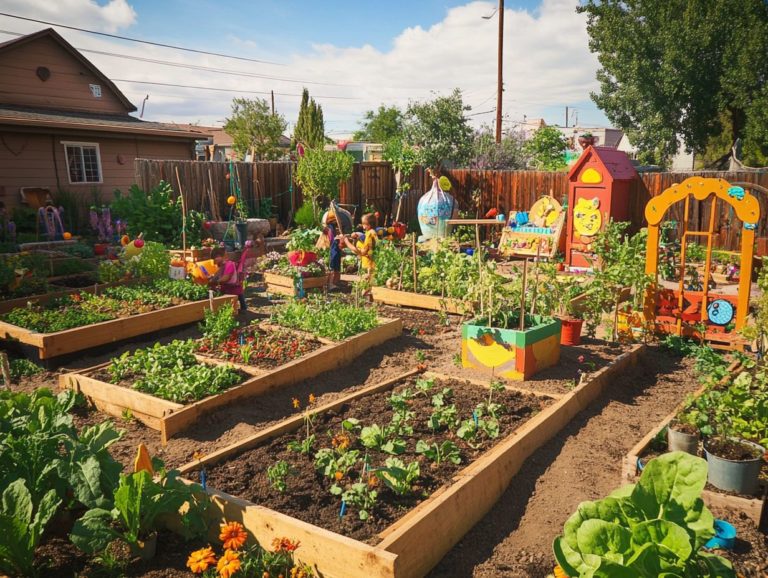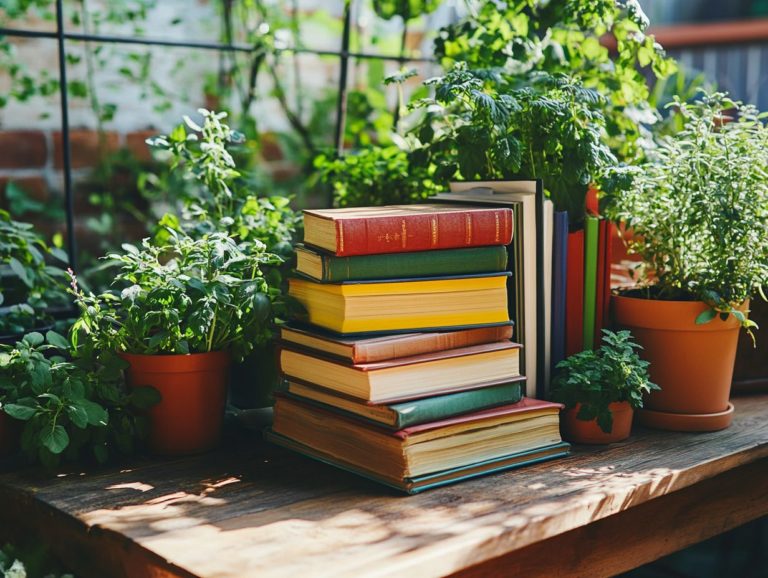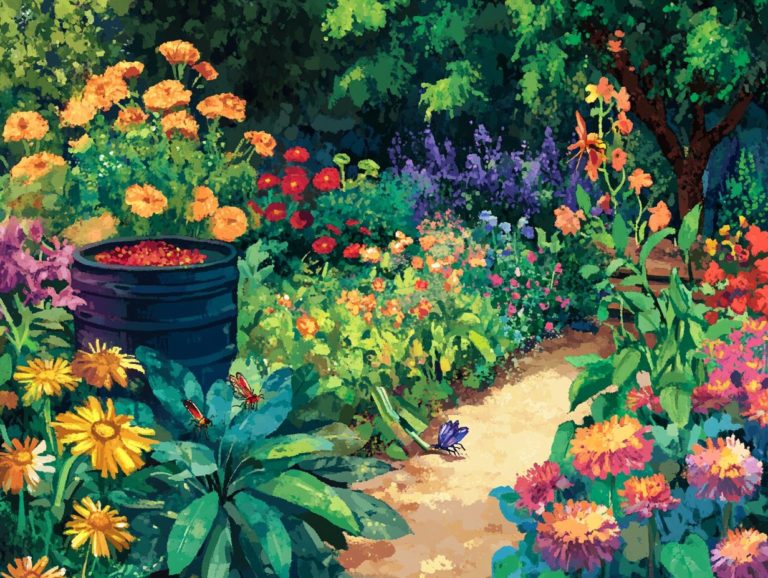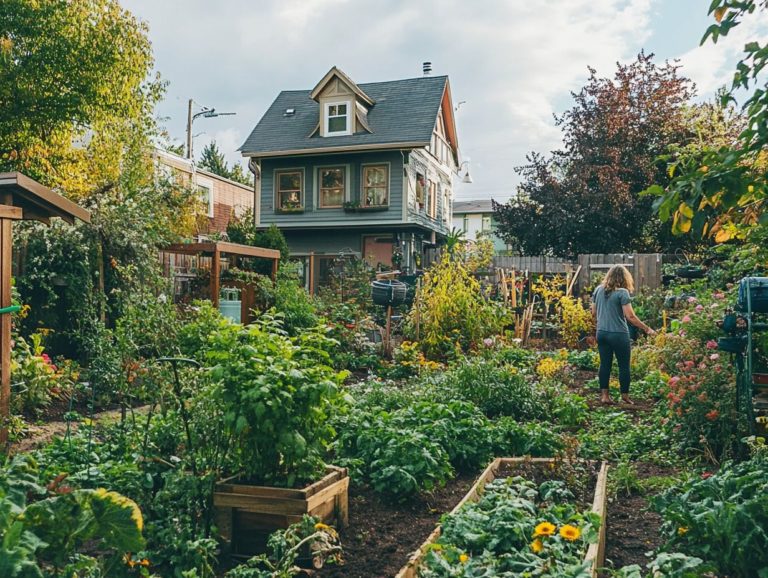How to Identify and Use Herbal Plants in Permaculture?
Permaculture presents a holistic approach to sustainable living. It seamlessly blends the principles of ecology with agriculture.
One of its most cherished elements is the incorporation of herbal plants. These plants not only enhance biodiversity but also offer a wealth of benefits for food and medicine. This guide will help you identify and select the right herbal plants for your permaculture design.
You ll uncover everything from planting techniques to effective harvesting methods. This knowledge will empower you to harness the power of these plants to enrich your ecosystem and elevate your lifestyle.
Get ready to transform your garden into an extraordinary, thriving paradise!
Contents
- Key Takeaways:
- Identifying and Selecting Herbal Plants
- Incorporating Herbal Plants in Permaculture Design
- Utilizing Herbal Plants in Permaculture Systems
- Harvesting and Preserving Herbal Plants
- Frequently Asked Questions
- What is permaculture and why is it important to identify and use herbal plants?
- How can I identify herbal plants in permaculture?
- What are some common uses for herbal plants in permaculture?
- How do I incorporate herbal plants into my permaculture design?
- Can I grow herbal plants in containers in my permaculture garden?
- How can I learn more about identifying and using herbal plants in permaculture?
Key Takeaways:
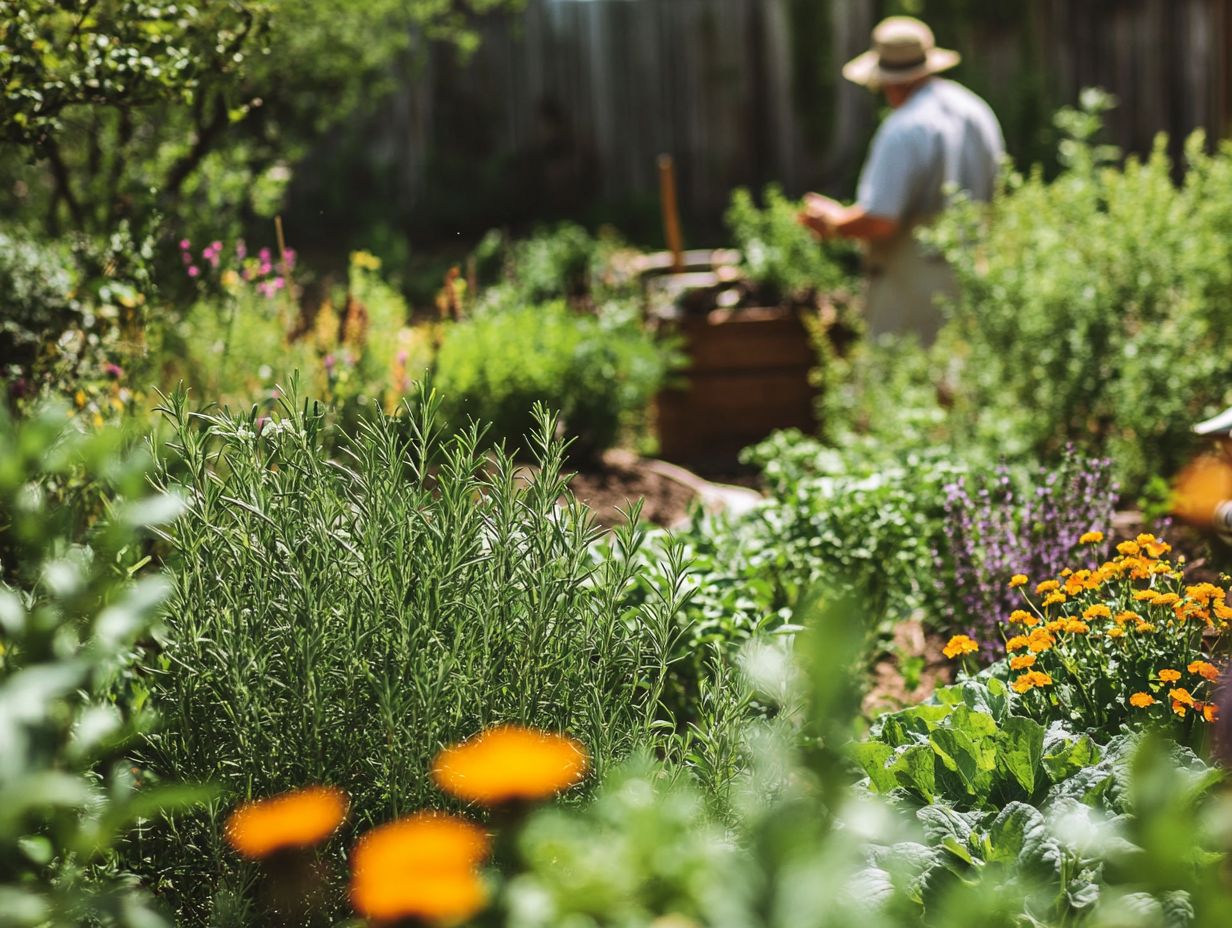
- Incorporating herbal plants in permaculture design can help create a more sustainable and diverse ecosystem. These plants provide numerous benefits such as food, medicine, and pest control.
- When selecting herbal plants, consider their characteristics and uses. Proper planting and maintenance techniques can greatly improve their growth and yield.
- Harvesting and preserving herbal plants require careful consideration to maintain their potency and longevity. Following best practices helps ensure the quality and benefits of these plants for future use.
What is Permaculture?
Permaculture is a holistic design philosophy that invites you to work harmoniously with nature. It creates sustainable ecosystems and agricultural practices.
This approach leverages the natural relationships among plants, animals, and soil. It fosters regenerative systems that are resilient and self-sustaining.
Incorporating medicinal plants and traditional medicine practices honors ancient wisdom and enhances biodiversity.
Rooted in principles that trace back to indigenous agricultural practices, permaculture champions the synergy of natural systems. It also addresses modern challenges like climate change and food security.
With a foundation built on caring for the earth, caring for people, and ensuring fair share, permaculture encourages practices that boost soil fertility and nurture diverse habitats.
By weaving a variety of native and medicinal plants into your permaculture designs, you can support local biodiversity. These plants provide resources for natural healing, ensuring that traditional practices continue to flourish.
The relevance of permaculture goes beyond food production; it offers a comprehensive blueprint for sustainable living that intertwines ecological health with community resilience.
Benefits of Using Herbal Plants in Permaculture
Incorporating herbal plants into your permaculture systems offers a wealth of benefits. It enhances both your well-being and environmental sustainability through the use of herbal medicine and natural remedies.
These healing plants contribute to holistic health by providing medicinal advantages while fostering a deeper connection with nature. They act as dynamic accumulators, improving soil quality and promoting biodiversity in your community gardens.
By integrating herbal plants into your permaculture practices, you support your self-care routines while embracing ecologically sound methods that resonate with ancient wisdom.
Including these plants in community gardens and your own herbalism efforts cultivates vibrant ecosystems. These ecosystems sustain a diverse array of wildlife while yielding resources for medicinal use, enhancing local biodiversity.
Herbal plants attract beneficial insects that aid in pollination and pest control. Interplanting herbs with vegetables results in a healthier, more productive garden.
You can harvest your own natural remedies ranging from soothing teas to potent tinctures tailored specifically to your health needs.
Ultimately, the thoughtful application of herbal plants within your permaculture framework nurtures an environment that thrives on sustainability and self-reliance.
Start your permaculture adventure today and enjoy the countless benefits of herbal plants!
Identifying and Selecting Herbal Plants
Identifying and selecting the right herbal plants for your permaculture system is crucial for harnessing their medicinal properties and ensuring bountiful harvests. This process demands a solid foundation in herbalism and a keen understanding of using indigenous plants in permaculture design.
By familiarizing yourself with the characteristics of medicinal herbs like Achillea millefolium, Urtica dioica, and Echinacea purpurea, you can make well-informed decisions that lead to the creation of diverse and functional healing gardens. Recognizing the value of herbal education empowers you to utilize these plants effectively, enhancing your pursuit of natural remedies and holistic health.
Characteristics and Uses of Common Herbal Plants
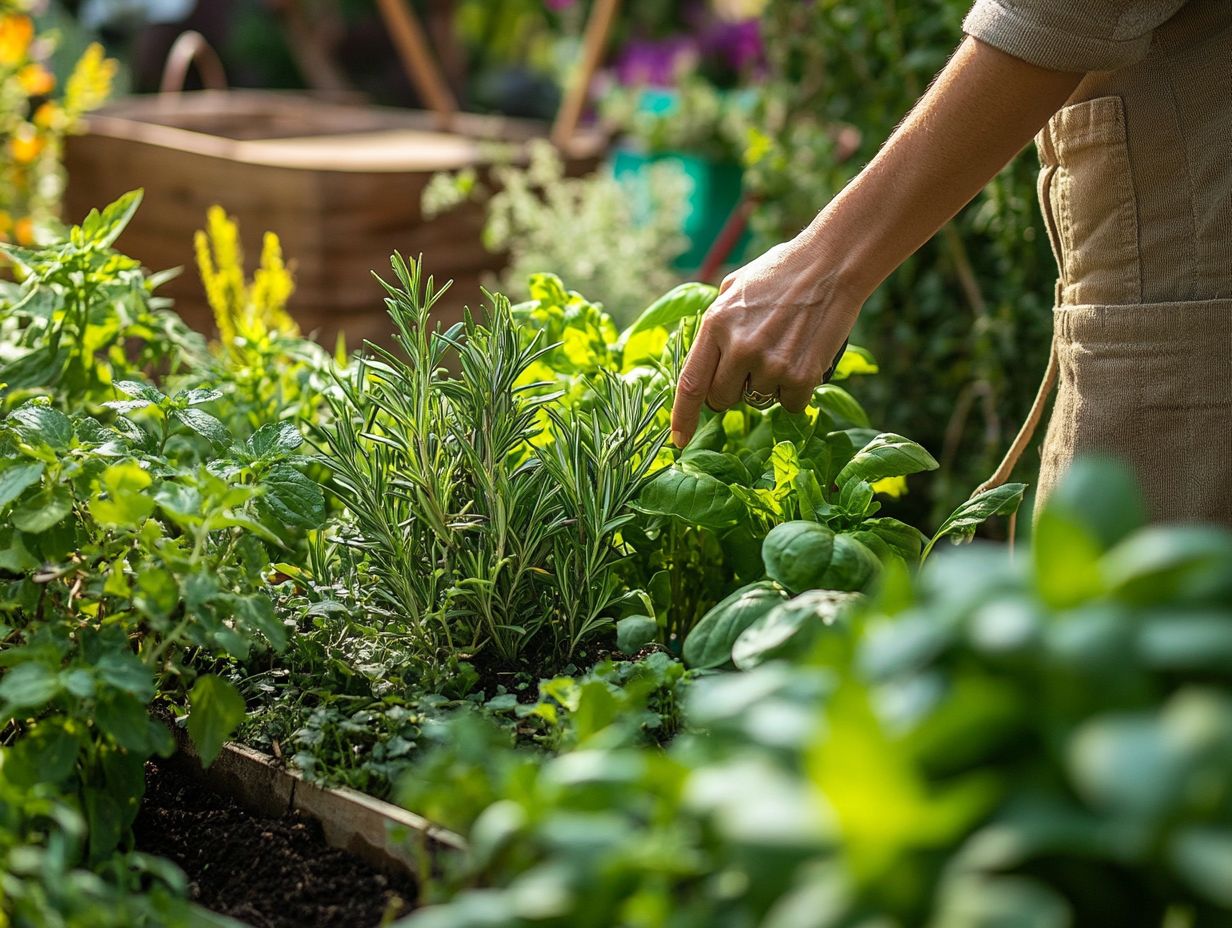
Common herbal plants such as Matricaria recutita, Melissa officinalis, and Artemisia vulgaris showcase unique characteristics and applications that play a pivotal role in the study of herbal medicines and healing practices.
These plants are brimming with natural compounds take chamazulene in Matricaria recutita, celebrated for its anti-inflammatory properties, or rosmarinic acid in Melissa officinalis, known for its soothing effects. Understanding these elements empowers you to fully utilize the potential of these botanicals, allowing you to tailor remedies to meet individual needs and enhance outcomes.
Artemisia vulgaris, frequently employed for digestive support and menstrual regulation, exemplifies the many uses of these herbs. Recognizing these active constituents not only leads to more effective preparations but also nurtures a deeper connection to the time-honored traditions of medicine, drawing from nature’s abundant offerings.
Factors to Consider When Choosing Herbal Plants
When you re selecting herbal plants for your permaculture garden, it s essential to consider factors like herbal safety, environmental adaptability, and the cultural traditions that influence self-care practices. Understanding the natural properties of plants and potential interactions of various medicinal herbs is key to using these natural remedies effectively and safely. Choosing organic food sources within your herbal garden enhances ecological health and promotes a sustainable lifestyle.
Evaluating the growing conditions for each plant is crucial. Consider the soil type, sunlight, and moisture requirements, as these elements will ultimately dictate their success in your garden. Engaging with local communities can also provide valuable insights into which herbs have been historically used and valued, enriching your selection process.
Here are some practical tips to guide you:
- Start with a few easy-to-grow herbs.
- Ensure you have enough space.
- Keep notes on their growth.
This thoughtful approach not only nurtures your garden but also deepens your connection to the land and its traditions.
Incorporating Herbal Plants in Permaculture Design
Incorporating herbal plants into your permaculture design demands a thoughtful strategy that harnesses the intricate relationships between your plant allies and the surrounding ecosystem. This approach not only enhances biodiversity but also cultivates vibrant healing gardens.
A successful medicinal gardening strategy integrates a variety of species, ensuring that your garden is not just visually appealing but also functional offering benefits like pest control and improved soil quality.
By adhering to permaculture ethics, you can establish self-sustaining systems where herbal plants flourish alongside traditional food crops, ultimately leading to a holistic approach to health and well-being.
Methods and Techniques for Planting and Maintaining Herbal Plants
Successfully planting and maintaining your herbal plants requires employing methods that nurture nutrient-rich soil, ensure effective irrigation, and embrace eco-friendly harvesting methods that safeguard the longevity of these invaluable herbal resources.
To cultivate a thriving herbal garden, selecting the right plant companions is essential. These companions can naturally repel pests or attract beneficial insects, reducing your reliance on chemical fertilizers.
Mulching is another key practice; it conserves soil moisture and suppresses weeds, allowing your herbal plants to flourish without interruption.
Regularly enriching your soil with organic amendments, such as compost or well-rotted manure, enhances its structure and biodiversity, creating a vibrant habitat for earthworms and microorganisms.
Crop rotation and cover cropping support soil health and prevent nutrient depletion. Together, these techniques form a holistic approach, enabling you to cultivate potent herbs that promote overall wellness and can be transformed into effective natural remedies.
Utilizing Herbal Plants in Permaculture Systems
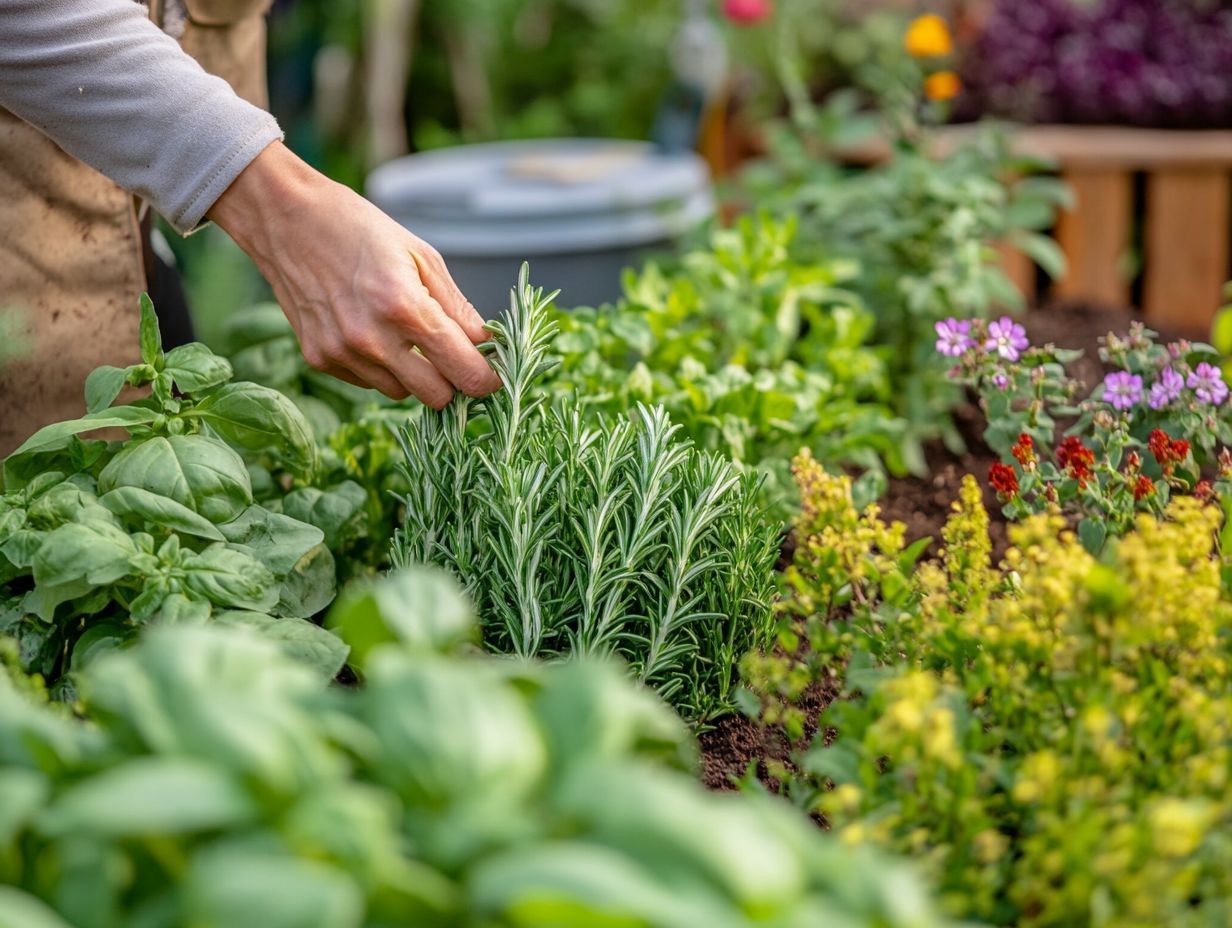
Utilizing herbal plants within permaculture systems can profoundly elevate your natural healing practices and foster a holistic approach to health and wellness.
By incorporating herbal remedies into your daily routine, you can access the spiritual wisdom these plants offer and cultivate a nurturing atmosphere in community gardens that promotes physical, emotional, and ecological well-being. This integration boosts your self-care and strengthens community ties by sharing knowledge and resources.
Ways to Use Herbal Plants for Food, Medicine, and Other Purposes
Herbal plants can be utilized in a myriad of ways, from preparing herbal teas to crafting tinctures and salves, each method offering distinct medicinal qualities to meet your unique health needs. Home herbalism invites you to explore these applications, giving you the power to create effective natural remedies tailored to your personal wellness goals.
If you re eager to dive into your herbal journey, starting with herbal teas is not just easy; it s a delightful adventure! Simply steep dried leaves, flowers, or roots in hot water to unlock their amazing benefits.
Tinctures offer another intriguing avenue; by soaking herbs in alcohol or vinegar, you concentrate their medicinal properties, providing you with a potent form of herbal medicine. For those seeking topical solutions, salves can be crafted by infusing herbs in oils and blending them with beeswax, delivering soothing relief for issues like dry skin or minor abrasions.
Each of these methods not only promotes wellness but also allows for customization based on your individual preferences and health requirements, making the world of herbal practices a truly enriching experience.
Harvesting and Preserving Herbal Plants
Harvesting and preserving herbal plants is an essential step in maximizing their medicinal qualities, allowing you to ensure that these valuable resources retain their efficacy for future use. Understanding the best practices for harvesting such as the optimal timing and techniques is crucial for maintaining herbal safety and fostering ecological health within permaculture systems.
By employing effective preservation methods, you can extend the life of your herbal resources, ensuring they remain readily available for a variety of applications.
Best Practices for Harvesting and Storing Herbal Plants
Using the right methods to harvest and store herbal plants is key to ensuring that your medicinal herbs retain their potency and effectiveness.
This approach grants you continuous access to valuable herbal resources throughout the year. You ll want to familiarize yourself with the right techniques for cutting, drying, and storing herbs. Consider factors like light, moisture, and temperature that can impact their quality.
By prioritizing herbal safety and ecological health, you can cultivate a sustainable practice that benefits both your well-being and the environment.
To achieve optimal results, aim to harvest herbs during their peak growing season preferably in the morning after the dew has dried but before the sun fully hits the plants. Cutting herbs just above a leaf node the point on the stem where leaves grow encourages healthy regrowth, ensuring a steady supply for your needs.
After harvesting, employing proper drying techniques such as air drying or using a dehydrator is crucial for preserving those essential oils and flavors.
Once dried, store your herbs in airtight glass containers. Keep them away from direct sunlight in a cool, dark environment to maintain their quality. These careful practices not only extend the usability of your herbs but also protect the biodiversity that is vital for future generations.
Frequently Asked Questions
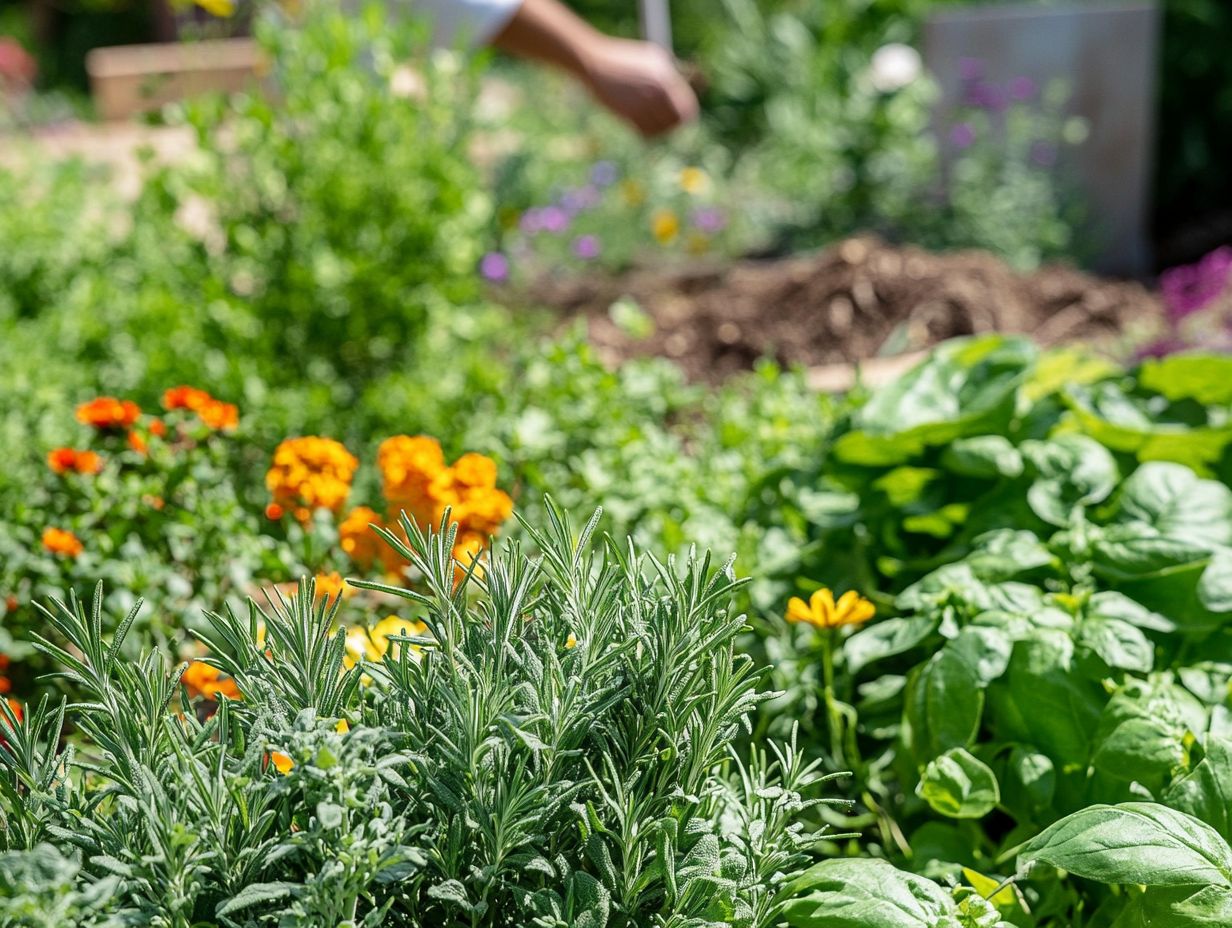
What is permaculture and why is it important to identify and use herbal plants?
Permaculture is an approach to sustainable living that aims to mimic natural ecosystems. Identifying and using herbal plants in permaculture promotes biodiversity, provides natural solutions for pest control and soil fertility, and supports overall ecosystem health.
How can I identify herbal plants in permaculture?
Look for key characteristics when identifying herbal plants in permaculture. These include the plant’s shape, color, texture, smell, and growth patterns. Researching how to incorporate native plants in permaculture will make your journey exciting and insightful.
What are some common uses for herbal plants in permaculture?
Herbal plants in permaculture have a wide range of uses, including as food, medicine, and natural fertilizers. They can also attract beneficial insects and pollinators, repel pests, and improve soil health. Some popular herbal plants used in permaculture include comfrey, chamomile, and stinging nettle.
How do I incorporate herbal plants into my permaculture design?
When designing a permaculture system, consider the unique needs and characteristics of each herbal plant. Some plants thrive in specific microclimates or soil types, while others perform best near certain companion plants. Plan for proper spacing and succession planting to maximize the use of herbal plants in your design.
Can I grow herbal plants in containers in my permaculture garden?
Yes! Growing in containers is perfect if you re short on space. Many herbal plants can be integrated into a permaculture garden. Just make sure to choose appropriate container sizes, use quality soil, and provide adequate drainage and sunlight for your herbal plants.
How can I learn more about identifying and using herbal plants in permaculture?
Many resources are available to learn more about incorporating herbal plants into your permaculture practices. Consider attending workshops or classes, reading books and articles, and connecting with permaculture communities and experts for advice and guidance. For a deeper dive, look into how to use companion planting in permaculture. Hands-on experience and experimentation are key to deepening your knowledge and understanding of using herbal plants in permaculture.

